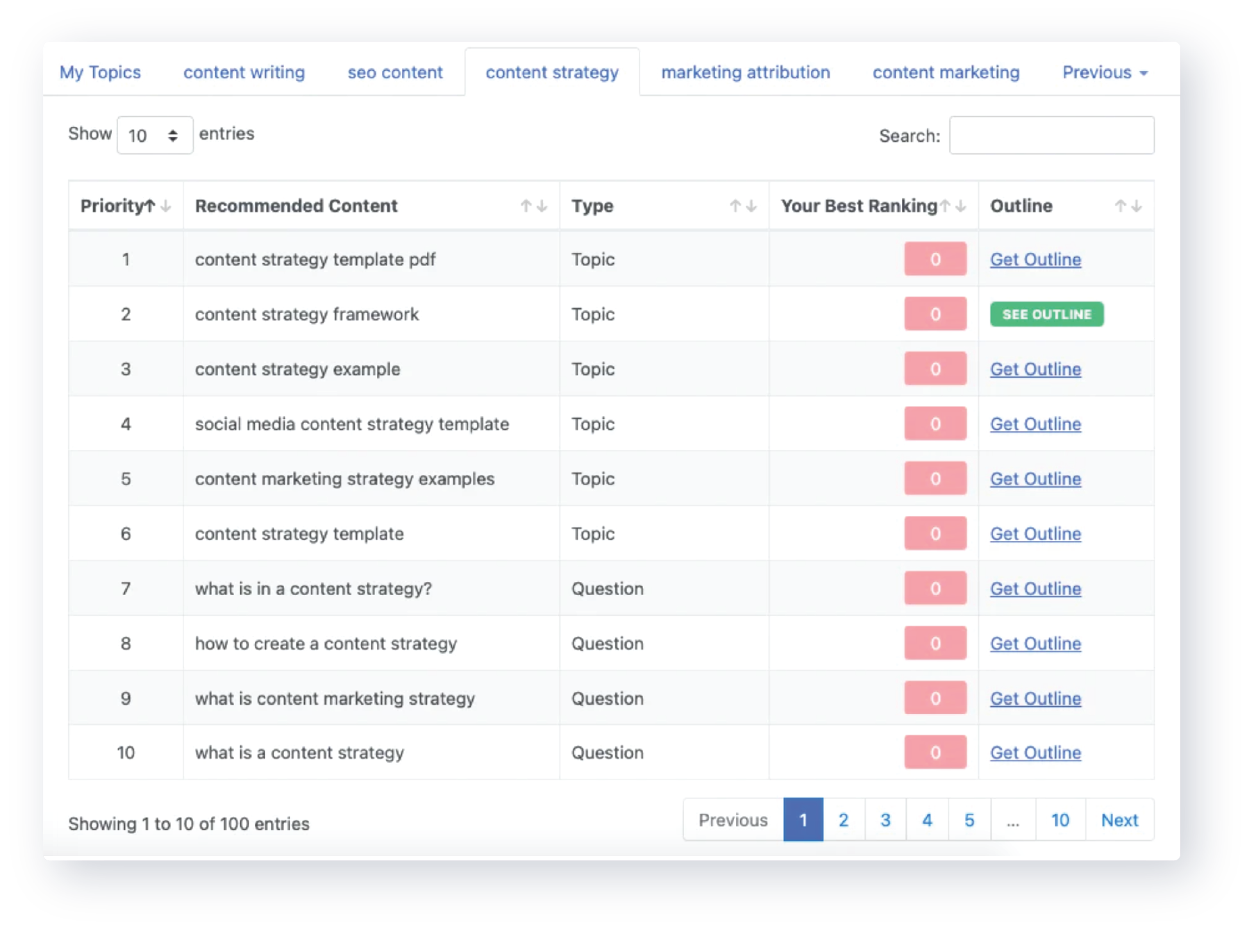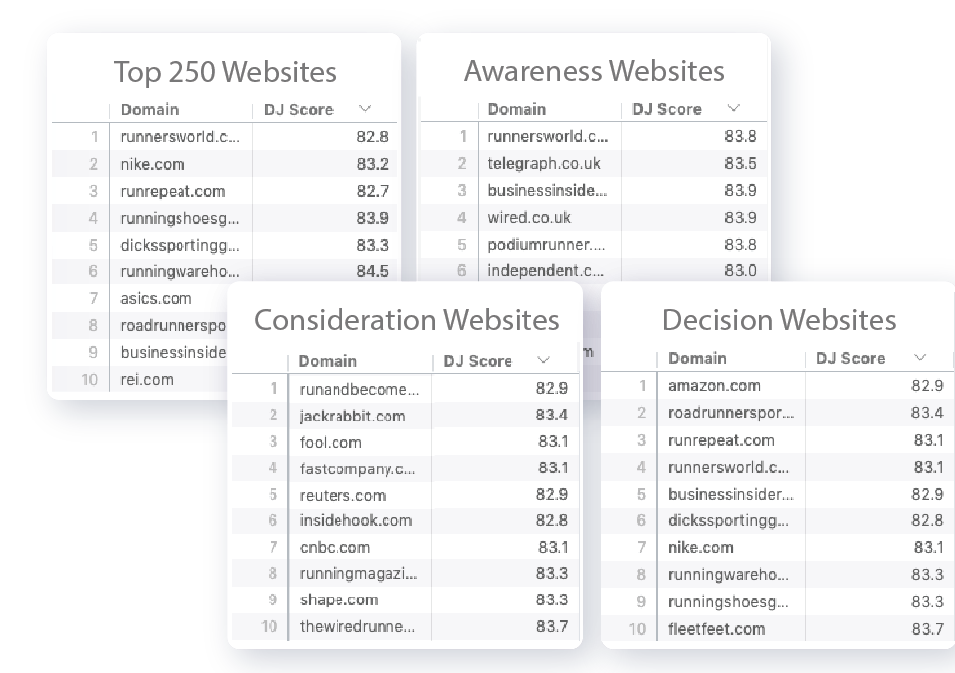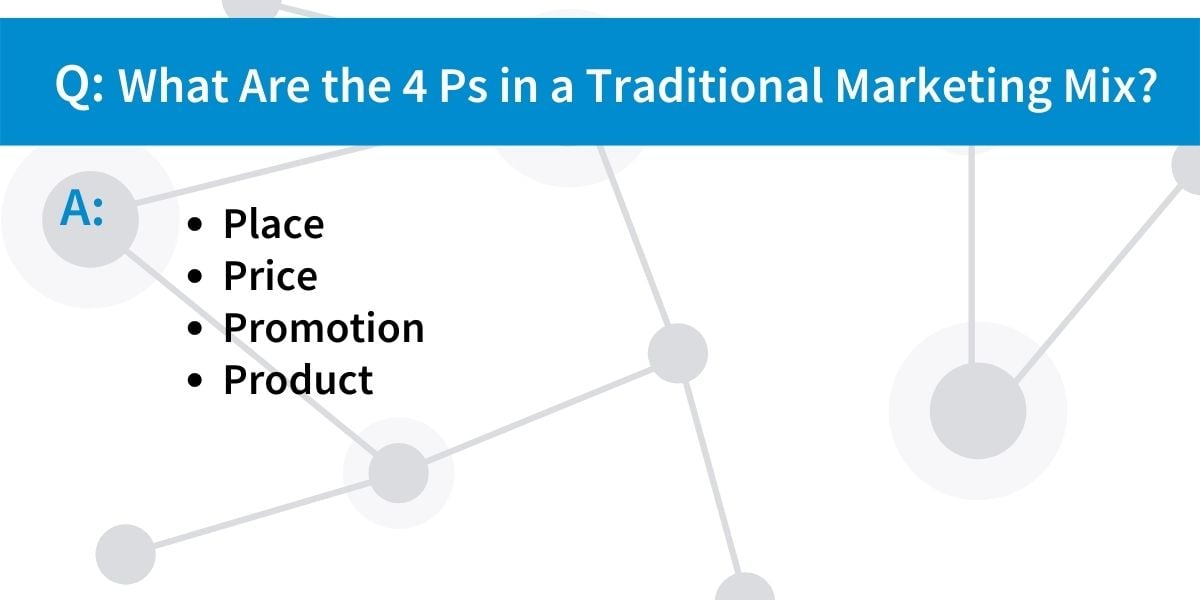See Insights in Action
By embracing DemandJump's approach to SEO, we have been able to increase our organic rankings within just 2 weeks of implementing recommendations. This helped us see a 22% increase in organic search month-over-month.
Robert Jacko Vice President Digital Marketing @ Homage
DemandJump has become a crucial extension of our marketing team, providing game changing insights to fuel and propel all aspects of our digital marketing efforts. The DemandJump platform is a must have, we are seriously impressed.
Tim Lavinder Director of Ecommerce @ Hotsox
We used to spend hours looking for insights in dozens of tools and reports. Now we log into one place to find out what customers are doing and how to meet them where it matters most.
Zach Roop Digital Marketing Manager @ Dometic
We use DemandJump recommendations as our digital to-do list. We love going in and seeing the recommendations and knowing what to do next.
JoLynda Wilson Marketing Director @ IWC
Trusted by Brands Around the World
Consumer Insights
Find out what your target audience cares about for any category, product, or topic, with the click of a button.
Know What to Write About
Eliminate the guesswork and align your content strategy to actual user behavior.

Know Which Keywords Matter
Get a prioritized list of the exact keywords that matter for your audience.

Automatic Customer Journey Map
Automated customer journey mapping tells you the keywords, questions, websites and videos your audience consumes for each stage of the buying process.

Get Free Consumer Insights Now
Adding Value to Your Website While Educating Customers
Content marketing is ever-changing, but there are strategies and techniques that don't change much because they rely on concepts that are universal. For instance, quality content has always been more valuable to long term marketing goals than poorly constructed content with the right keywords in place.
Other parts of the content marketing strategy can change for a few reasons. The way that your target audience searches for content evolves with technology and new techniques that help to surface valuable content. Long-tail keywords were added to SEO keyword research because so many users started using ‘voice to search’ when looking for information. The types of keywords you use through voice search are different than the ones you're likely to key into a search bar.
Search engines change their algorithms for a specific reason — to help searchers find the exact content that they will find valuable. Every new algorithm change is something that marketers need to consider in the way that they approach content creation, but the reality is that these changes also serve to help websites that are building reputable and valuable content. Your goal is to attract the right target audience that will become a loyal customer base. The search engine's goal is the same.

Pillar pages are fast becoming a key piece of a content marketing strategy because they work well. They help improve ranking and organic search and they offer shareable content that the audience finds interesting or useful. This is not a new technique and it's more than simply about the creation of a page. It's the strategy to organize topics that make your website more usable for the audience. This strategy also helps you keep your content and schedule organized to better deliver the content that your target audience needs.
Pillar Content in Your Content Marketing Strategy
There are several elements of SEO strategy that are important to increase relevant traffic. Notice the use of the word, "relevant". Building a good content marketing strategy depends not on increasing traffic alone but in targeting the right audience. Pillar marketing serves to help with a few of your SEO goals. A well-written pillar page is intensely shareable. In SEO terms, this means that you'll attract more backlinks to your website because your audience will find the information useful and share it with their own following.
Backlinks are the term for links back to your site from other websites and users. Search engines pay attention to the number of links that reference your website and the quality of the link. Having a backlink on a well respected, highly-ranked website drives traffic to your site from that source and it also helps to increase your credibility.
Typically, a pillar page is a longer piece of content that covers a broad topic that your ideal customer will want to know about. For instance, if your website was about home renovations, you might have a pillar page on exterior renovations. Different topic clusters examples would cover aspects such as landscaping, siding, masonry, gutters, windows and doors, and roofing. These sections could then link back to content that covers each topic on your blog or in other articles on your website. The page itself serves as a larger piece to give an overall view.
Pillar pages should be planned according to who your target audience is, what they will find most valuable, and how you can serve them. The topic should be wide enough to allow topic clusters that fit inside that subject. The topic should not be so broad that you run the risk of attracting a large amount of traffic that is really looking for other types of content.
The Marketing Mix in Your Content Strategy
The traditional marketing mix consists of the 4 Ps — place, price, promotion, and product. They've expanded now to include things like packaging and positioning. It's marketing, so they stick with "P" words to be clever and aim for better clarity. These terms were originally created to help businesses better position their products in the marketplace and to help them develop campaigns that attracted the right consumers. That hasn't changed very much but the way that we approach marketing has.
The 4 Ps in a traditional marketing mix:- Place
- Price
- Promotion
- Product
Your content strategy should be less about promotion and more about relationship building. Positioning should be one of the first aspects you dissect in your content strategy. Your marketing position shows you who your competition is and where in the market your company belongs. Once you understand your marketing position, you can develop your branding. This is the way that you present your company to the world. Your branding differentiates you from every other company in your space. It answers the question of, "why am I the best company for this customer?"
Your marketing position is specific. It needs to highlight why a customer would choose your company over every other company that offers the same thing. This might be something simple, like great customer service or better pricing. It might be something more advanced, like a unique service that no one else offers. Use your marketing mix to better understand where your company is in the marketplace, this will allow you to develop a targeted approach to your content strategy. Knowing who you serve means that you can develop unique customer personas that help you communicate with your target audience in a personal way.

Elements of SEO Strategy
There are several SEO topics to consider when planning your SEO strategy. It's more than simple keyword research or finding the right places to put keywords into your website. Your SEO strategy is part of the overall content marketing strategy that you employ. SEO stands for search engine optimization. It's the process of making sure that your site and content is crafted in the optimal way for the search engine to direct traffic your way. Remember, the search engine is looking out for the searcher. They want to recommend websites that have the right content and authority. Look at this as a recommendation from the search engine. They are more likely to refer a website that has credentials (history, regularly updated content, is linked to from highly regarded websites).
Once you have your marketing position and branding defined, the next step is to work on your SEO. This includes keyword research and researching which terms your competition is using. The intricate part of keyword research is in recognizing why your average user would be searching for that specific term. This is not always clear. Usually, you would start researching with the topic that best fits the content. You can tailor down a list of individual keywords and choose the ones that you would most like to rank for — basically, you're choosing which keywords you'd like to see your website rank for on the first page of search.
Using a great SEO strategy will usually help you rank well for those words but what you really want to pay attention to here is conversion rates. It's not only about increasing your traffic. You need to look at how long visitors stay on your site when they arrive from those keywords and what they do once they've arrived. In many cases, conversion takes more than one visit. It's okay if your target audience doesn't purchase right away.
A red flag might be if you notice that your audience who arrives from those keyword searches then leaves the page immediately and doesn't return. When that happens a great deal, it's a good sign that the audience is using that search term for a purpose other than what your site offers.
SEO keyword research is part of the strategy and checking your analytics is another part; these two items together can help you determine the user intent. You need to know why your target audience would be looking for your site in order to use the best methods to attract them and then build a relationship with them.
There are more technical aspects of SEO, as well. Some of these aspects of SEO include making sure that your website is optimized for mobile and that the architecture doesn't have any issues. You want to make sure everything on the backend is working to allow for crawling and indexing.
Website Content Strategy
Your website content strategy will often depend on the purpose of your website and the kind of audience you are trying to attract. An eCommerce website might use their web property to build confidence and loyalty so that customers are comfortable using the site. An expert who provides consulting services might develop a website content strategy that offers actionable advice for prospective clients.
Your content strategy can use different techniques. SEO pillars are one way to attract your target audience and offer them valuable content. Your pillar pages can serve a few functions. They target specific keywords and they help you to organize your content topics. The most successful pillar pages are shareable. These can include guides or how-to pages or entertaining content that people will enjoy reading.
It might be a list of ways to do something or a handy guide on a difficult topic in your niche. The title should be something that grabs attention and promises the reader some type of value. Within the content, you can link past blog posts that go into more detail about topics within your pillar page. These topics are called clusters. You organize your content as one pillar or one main topic and then there are clusters of topics that relate to or are part of that topic.
Take marketing for example. If I was to write a pillar page on content marketing strategy, the topic clusters might include SEO, social media marketing, website content, blog posts, and how to build backlinks. There are other topics, as well. As you can see, this is a way to organize your content but it can also help you to create future topics for blog posts that you can link into that pillar page later. And you can use current blog posts to link into the page you're creating.
Topic Cluster Example:
Content Marketing Strategy
- SEO
- Social Media Marketing
- Website Content
- Blog Posts
- How to Build Backlinks
The Pillar Cluster Model
A lot of marketers use a topic cluster template to help them develop their pillar page topic cluster. This can be a visual way to build out the content so that you can readily see what the pillar is and how the different topics fit around it. It's a visual map of sorts that allows you to build more content as you go and to develop the keywords that correspond to each piece of content.
If you have already been creating content for a long time, but have not used the pillar cluster model, it's not too late to start. In fact, that makes it a perfect time to start because you already have a significant amount of content. The model just lets you organize that content in a way that makes it easier to find for your audience and more organized for the people who run your blog.
Using a pillar cluster model, your first step would be to take an inventory of the content you currently have and how it performs. This is a good time to prune your content. You can remove older posts that are no longer relevant or update them. If you update them, make sure that you include the editing date at the top of the blog to let readers know there will be more information included based on the date.
If your blog posts have covered a wide range of topics, it may take some time to develop the topic clusters and the pillar topic. You don't have to settle on just one pillar page. Most websites can have several pillar pages. Once you've gone through all of your content and organized it into topics, you can identify where those topics go. Which pillar page would they most relate to?
Then you can develop a plan to create your pillar pages.
You should also keep in mind that as you launch each pillar page, you need to pay attention to the analytics to help determine how well it's performing overall. This will help you adjust the way you approach your pillar creation and organization. As you build your content, you might even publish weekly pillar pages to offer more value to your readers.

How Do You Create a Pillar Page?
There is no hard and fast content pillar template to follow when developing your pillar cluster model. You can look up different examples of high performing content pillars that explain why they work so well. Overall, though, your best performing pillar page will be unique to your business and provide value to your target audience.
We've talked a lot about linking your blogs to your pillar page but that's not the only kind of content that you can link into your content pillar. If you have video content or eBooks on the subject, you can link those in, as well.
When you start your creation process, the first thing to consider is your audience. Why do you want them to visit your site? If their intent is different than the intent you WANT them to have, the communication isn't going to be as effective. It may even be irritating. So you need to start with the why. Why are they coming to you?
The answer to that question will tell you a bit about how to build your pillar page. If you want the audience to come to you as an expert in your industry, the best way to approach your pillar page is by offering them actionable advice on a topic that your business offers expertise in.
The headline is important. This is where you grab the reader right away. It should be enticing but also honest. Clickbait titles that promise the moon might get people on your page, but they make the audience angry when they don't deliver. That's not what you're aiming for. You want them to feel satisfied with the content and to come away with a higher opinion of your expertise than when they first arrived.
The content you create should fill a need for your audience. This can mean a few different things. It might be a resource to help them navigate some areas of knowledge. It might be an informative piece that talks about a new technique or trend. And be sure to consider the user's overall experience on the page. In addition to excellent content, the website needs to be easy to navigate and offer answers to questions they have while reading. It should also make it easy for them to go further in your funnel, whether that means finding your contact information readily available or easily signing into a newsletter.
Still not sure where to start? Try DemandJump free and remove the guesswork. You’ll see exactly which topics to cover, keywords to include and questions to answer in your pillar page.
Insights Resources
Consumer InsightsConsumer Behavior
Consumer Behavior for Marketers
Consumer Insights and Analytics
Customer Insight Research Techniques
Customer Journey Map
Pillar Page Content
SEO Content Strategy
Types of Consumer Insights
Other Resources
Channel Optimization
Consumer Behavior
Consumer Insights
Consumer Insights and Analytics
Competitor Analysis Tools
Content Marketing
Content Strategy
Cross-Channel Analytics
Customer Insight Research Techniques
Customer Journey Map
Market Intelligence
Marketing Analytics Techniques
Market Research
Marketing Attribution
Opportunities of Internet Marketing
Types of Consumer Insights





